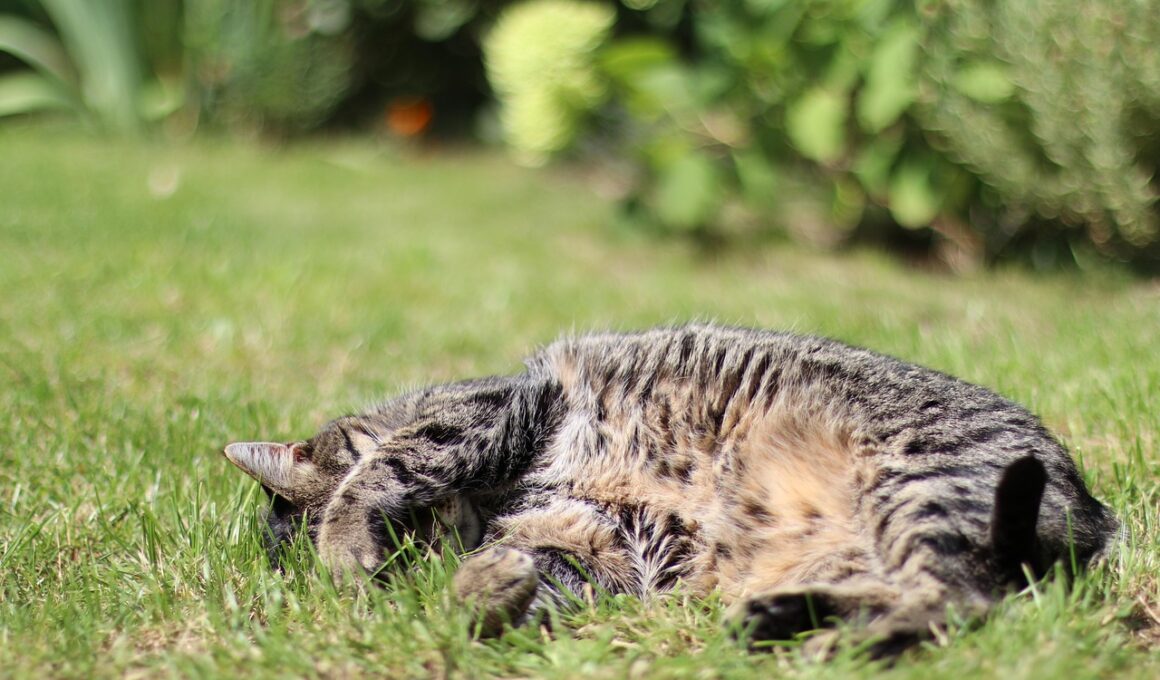Creating a Calm Environment for Cat Grooming
Grooming a shy cat can be a rewarding yet challenging task. The first step towards success is to create a calm environment where your feline feels secure and less stressed. Choose a comfortable, quiet room away from loud noises, like televisions or heavy foot traffic, to set the tone for the grooming session. Use blankets or soft mats to provide a cozy surface for your cat to sit on during the grooming process. Ensure that the room’s temperature is pleasant, neither too hot nor too cold, for your cat. Initially, allow your shy cat to explore the grooming area without the tools, fostering a sense of familiarity. Use gentle, soothing voices to reassure them. Consider introducing calming pheromones, which can significantly help alleviate anxiety. You might even break in a favorite toy or treats as positive distractions. Most importantly, patience is key; the goal is to help your cat associate grooming with pleasant experiences. With time and gradual exposure, you will help your shy cat feel safe and more comfortable with grooming.
Once your cat is more accustomed to the grooming area, consider your approach during the grooming session itself. Begin with short grooming intervals, using a brush designed for cats to reduce anxiety. Pay attention to the specific areas your cat dislikes and approach those gently. Start with familiar areas, such as the back and sides, where they’re likely to tolerate your touch. While grooming, talk softly to your cat, using their name or phrases they recognize to reinforce a sense of safety. Use special grooming treats or rewards to create positive associations, ensuring that your cat looks forward to sessions. If your cat starts to show signs of stress, such as hissing or trying to escape, take a break and allow them to calm down before resuming. Additionally, try to keep your movements slow and deliberate to avoid startling them. Remember, the goal is not to finish quickly but to build trust through consistency and kindness. This process may take some time, but it will significantly enhance your cat’s experience and build a stronger bond.
Understanding Your Cat’s Body Language
Successful grooming hinges on understanding your cat’s body language. As a pet parent, being attuned to your cat’s signals can help you gauge their comfort level during grooming sessions. Observe their ears; if they are pointed forward, they are likely relaxed, while flattened ears may indicate stress or anger. A relaxed cat typically has a loose posture. In contrast, a tense body could mean they are uncomfortable. Pay close attention to the tail position; a slowly swishing tail often reflects irritation. It’s essential to notice when your cat seems to be enjoying the grooming process. If your cat purrs or closes their eyes, it shows they feel safe and comfortable. Grooming should never feel like a punishment; instead, pivot your approach based on their reactions. Consider having an assistant help to hold the cat gently if you struggle to maintain control. Remember, every cat is individual, with different grooming preferences and thresholds. Being aware of these cues allows you to adapt your actions, ensuring the process is both enjoyable and effective for your shy feline friend.
Introducing grooming tools to your cat in a non-threatening manner can foster a better experience. Start with simply allowing your cat to sniff the grooming tools when they’re not in use, gradually letting them explore and investigate at their own pace. Praise them if they show curiosity, rewarding this behavior with treats. Initially, try using your hands to pet them gently, mimicking the motions you use with a brush to create familiarity. Once they appear comfortable, you can introduce a grooming brush. Pick one with soft bristles or a comb designed specifically for sensitive cats. Stroke it against fabrics to noise, helping to reduce fear of the sound. When you initiate actual grooming, do so slowly, starting with just a few strokes and pausing frequently for breaks. The key is to never push your cat too hard or too quickly, as this can lead to resistance. Also, consider utilizing slicker brushes for long-haired cats while ensuring you know what tool suits your cat’s coat type. Overall, leading with empathy will significantly ease the grooming process.
Creating a Positive Association with Grooming
To make grooming a more positive experience for your timid cat, it’s important to focus on creating a positive association with the process. Use treats, praise, and gentle petting before, during, and after grooming sessions. This encourages your cat to view grooming as a rewarding activity. Establish a routine that includes grooming as part of your bond; consistency builds trust and familiarity. Make a game of grooming by integrating short, playful sessions that suit your cat’s mood, allowing for spontaneous breaks. Each session can become a mini-training opportunity where you reinforce their good behavior during grooming, helping relieve built-up anxiety over time. Resistance is expected in shy cats, but maintaining a soothing and reassuring demeanor can help reduce their stress levels. Consider setting specific times of the week designated for grooming to establish this new routine. It can also provide a schedule that your cat will learn and adapt to, negating the sudden rush that often accompanies unexpected grooming. Over time, positive reinforcement will help shape your cat’s outlook towards grooming, eliminating their fear and replacing it with trust.
Furthermore, focus on the importance of establishing a structured grooming environment, which can help soothe a shy cat. If grooming becomes too stressful, you may want to break up the grooming routine into shorter, more manageable parts over time. One approach is to tackle smaller grooming tasks, such as focusing on just the face or paws in one session while leaving other areas for another time. Using low-stress techniques can help keep your cat feeling comfortable—the goal here is not to correct all their grooming needs during one session but to ensure overall comfort and trust. Use calming music or white noise to help minimize anxiety; many cats respond well to sound. Additionally, dimming the lights slightly can create a conducive atmosphere. Consider incorporating a favorite blanket or toy in your grooming space during sessions to distract your cat gently. This combination of environmental factors can provide the sense of stability and safety that your shy cat craves, enabling better outcomes in grooming effectiveness over time, turning grooming into an anticipated and enjoyable experience.
Post-Grooming Techniques for Success
After a grooming session, it’s vital to reinforce the positive behaviors you’d like to see in your cat. Always follow up with a rewarding treat or playtime, promoting a sense of accomplishment for both you and your cat. The experience should end on a high note; your cat should feel like a champion, not stressed or threatened. Gentle petting and praise help solidify this positive connection associated with grooming. Offer new toys twice a week to keep interest high, along with treats that your cat enjoys. Scheduled grooming sessions can be key to manage expectations and prevent despair; when your cat learns that grooming comes with enjoyable outcomes, they are more likely to embrace each session. After each grooming instance, take a moment to observe any areas of discomfort, as these notes can guide future sessions. Additionally, remember to maintain your grooming tools regularly, ensuring they are clean and effective for the next grooming day. Building connection and reinforcing success can turn grooming into a pleasant ritual that strengthens your bond with your shy cat.
In conclusion, by following these tips on establishing a calm and reassuring grooming environment, you will undoubtedly help your shy cat become accustomed to grooming. Remember to be patient, observant, and gentle throughout the process while considering adjustments based on each cat’s preferences and personality. Establishing a routine reinforces your cat’s trust and builds their comfort level over time. Introducing grooming in small steps, while prioritizing a stress-free environment, is essential. Through the combined efforts of understanding your cat’s body language and creating a positive association, you will gradually see improvements in your grooming sessions. Always pay attention to your cat’s reactions and adjust accordingly, making grooming a rewarding experience. Use tools suited to your cat’s coat type, and always foster their mood through positive reinforcement. The rewards are multifaceted, as not only will your cat enjoy grooming, but you will grow significantly closer to one another. With time, your shy cat will exhibit confidence and trust towards grooming sessions. Embrace a holistic approach to cat grooming, focusing on their emotional welfare as much as the practical aspects they require.


